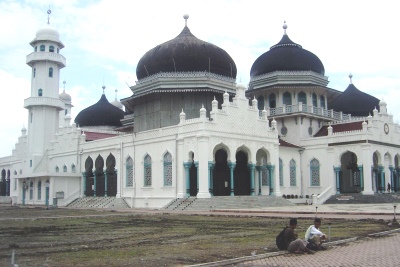
Eyewitness - Indonesia
excerptsChapter 14 Island Archipelago covers a few key aspects of my visits to Indonesia. It is such a vast and varied country that has amassed considerable influence within Southeast Asia. Its geographic spread is massive including 17,500 islands. Its population is currently around 270 million – the 4th largest in the world today. It is also a nation that lives under constant threat of natural disasters due to its location on a major fault line in the earth’s crust. This is evidenced by the high incidence of volcanic eruptions, earthquakes and tsunamis. It is also home to around 750 ethnic groups with their own language and culture. Around 86% of the population are identified as Muslim but the official government position guarantees freedom of religion for the 5 major world religions.
My first visit there was in 1970 but by the beginning of the new millennium it soon became my most visited, especially after the 2004 Indian Ocean tsunami.

Bahasa Indonesia is the national language and was created to provide a trade and educational language that all peoples could have in common. Bahasa is basically Malay but with some changes made. Creating a common language was an ingenious way of finding neutral ground to help unify the nation and secure its place in the world.
Each ethnic group has its own mother tongue and culture. Through our RICE/Wb2 research we had found there to be around 15 major language groups within Indonesia – some of them, like the Sundanese (23 million), very large. The largest ethnic population is the Javanese. The view from Jakarta was that everyone in the country knew Bahasa and it was the national language – but the view from the provinces was quite the opposite. It was in their own languages that they expressed their culture and identity and found a sense of belonging. The development of broadcasts in the local languages was therefore of great importance and Samuel put his weight behind it.
In addition to the many indigenous ethnic peoples, there were a lot of Chinese living in Indonesia’s cities. Many of these had become Christians but, sadly, there was a history of riots against them. This negative attitude went back to the early days of independence, when Sukarno was president. It was believed that many of the Chinese were communist sympathisers, and major civil unrest saw many killed. Even in more recent years, there have been dark times when outrage against the Chinese has boiled over, especially during the turbulent years of 1997-8. Shopping malls and stores were torched, and angry Muslim mobs roamed the streets, seeking out Chinese women to rape and torture, sometimes going through entire apartment complexes. When I was in Jakarta for the dedication of the new Heartline FM station on the occasion of YASKI’s 29th anniversary in November 1998, there were tanks out on the streets and a curfew was declared. It became known as Black Friday and was very tense. (p. 159)
Here follow two excerpts….
